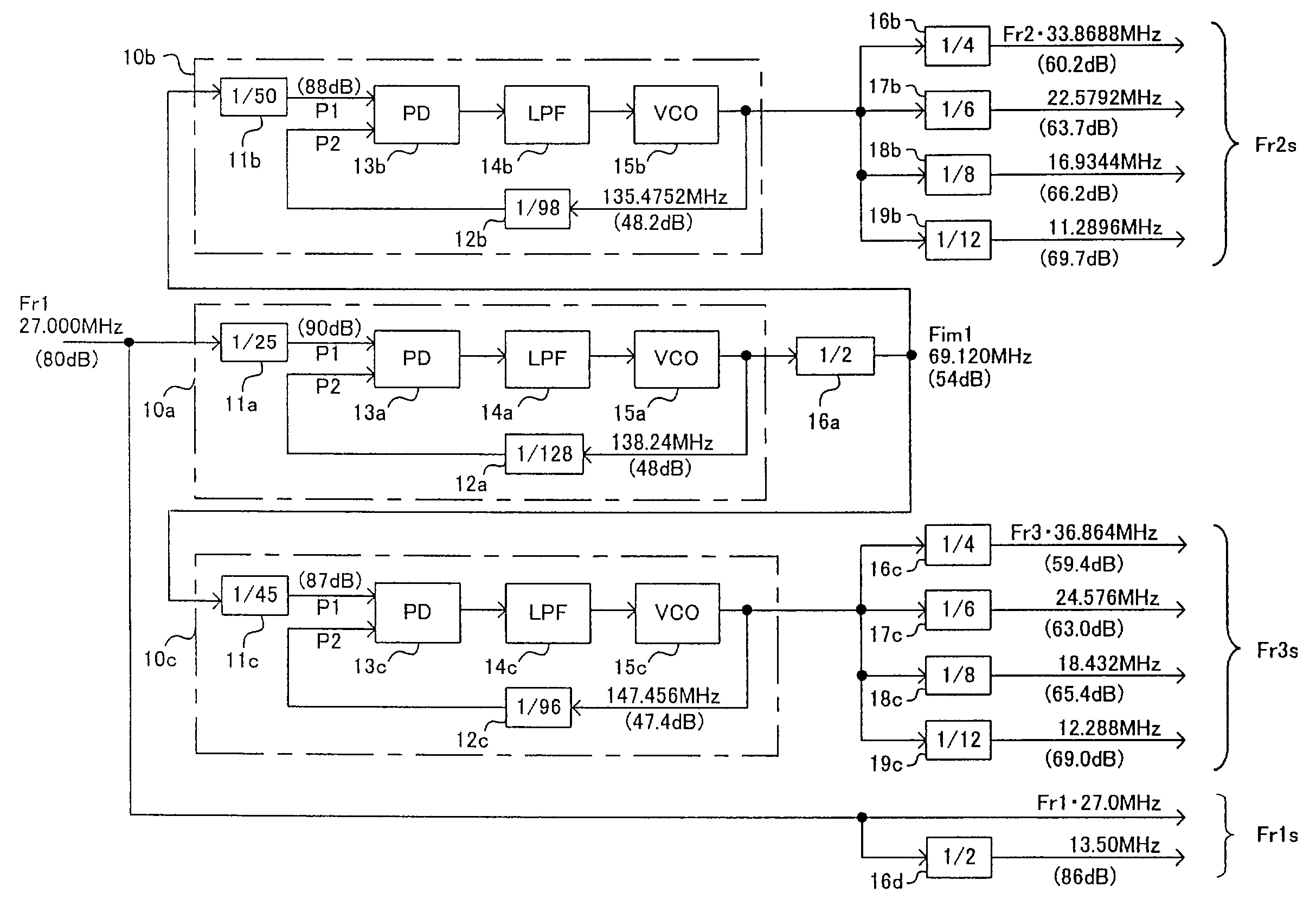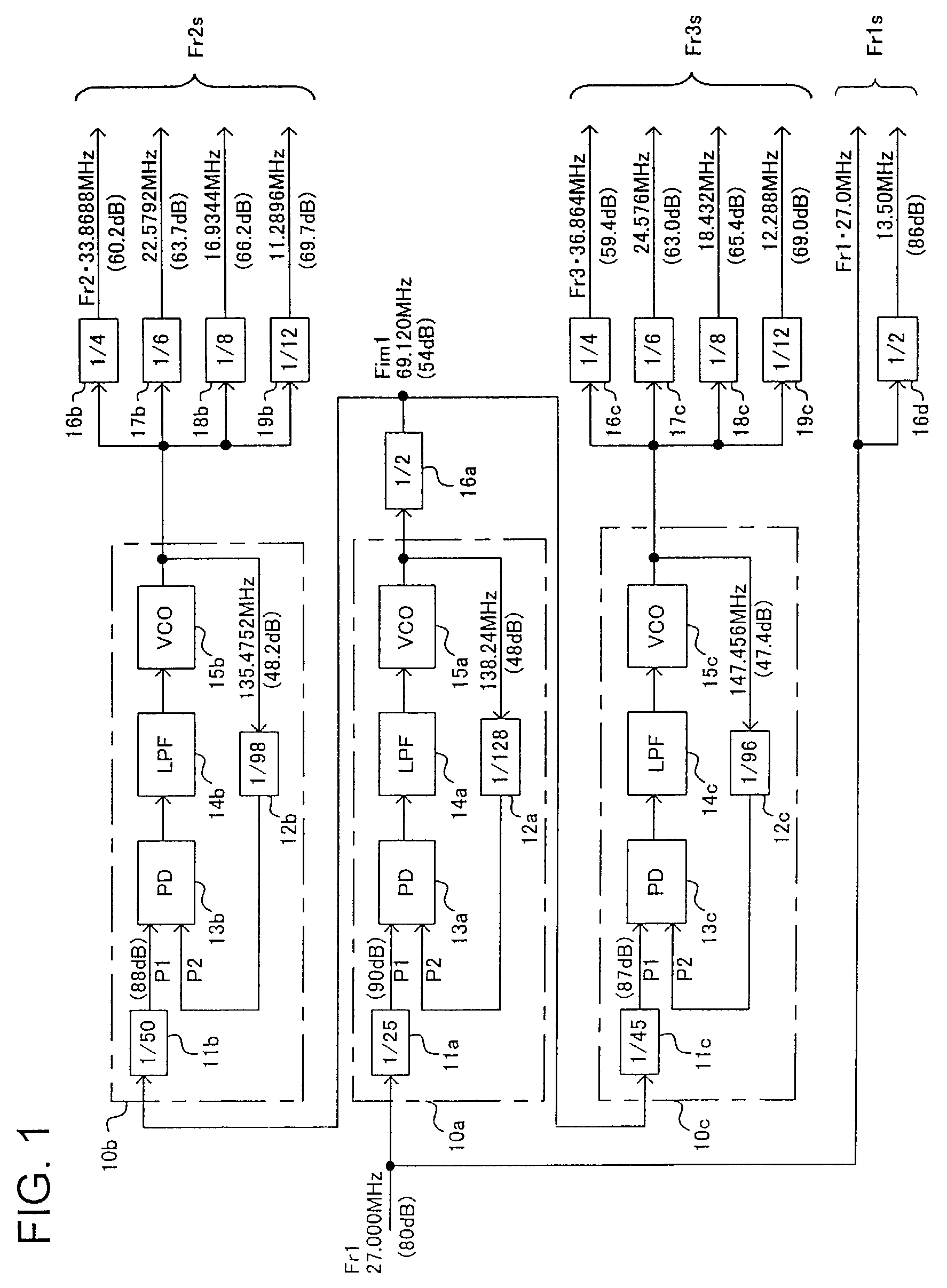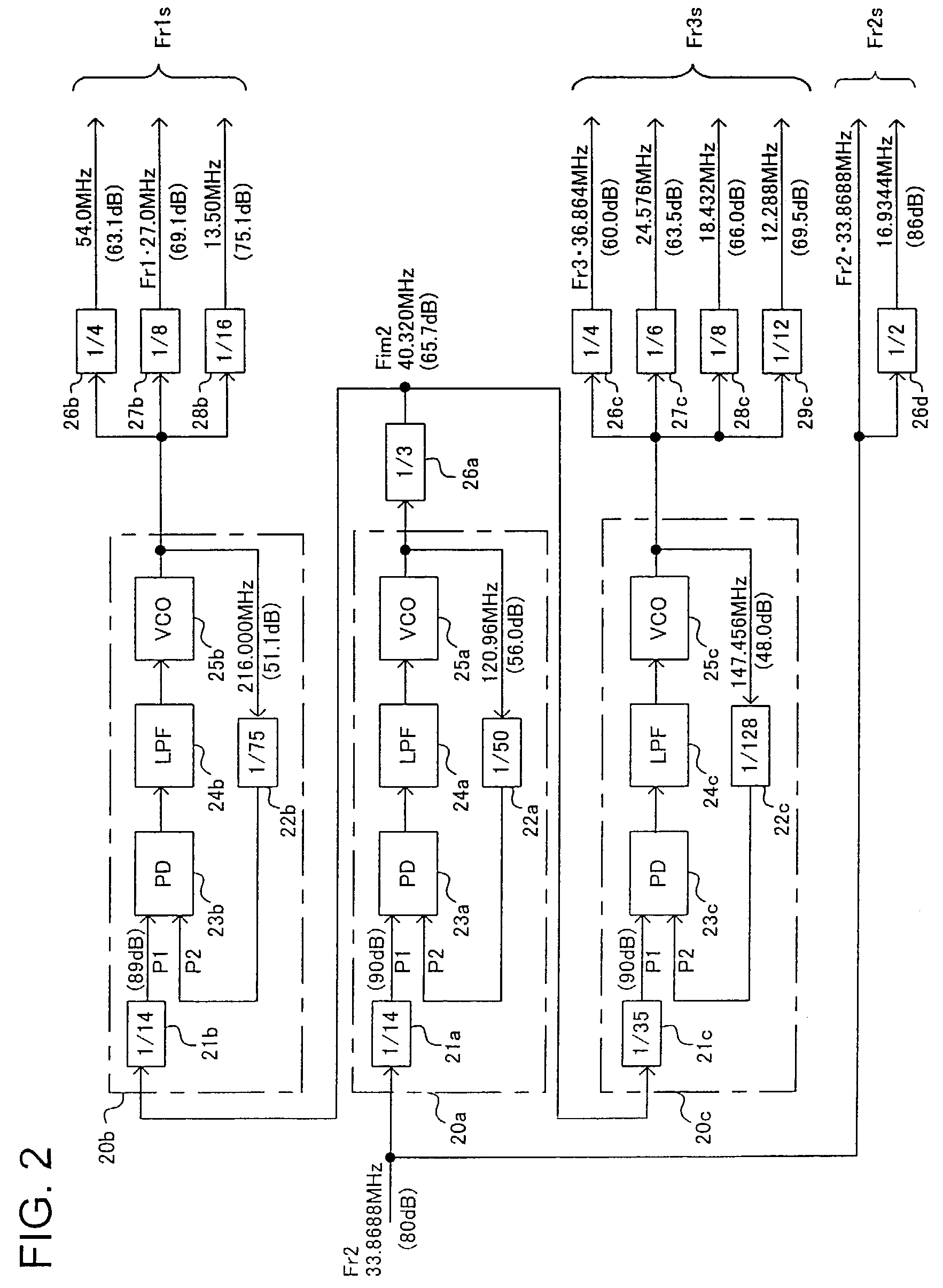Clock generation system
a clock generation and clock technology, applied in the direction of generating/distributing signals, pulse techniques, instruments, etc., can solve the problems of deterioration of s/n ratio, high cost of clock generation system approach, and limited s/n ratio of pll circuit, etc., to achieve sufficient s/n ratio and minimize the influence of noise floor
- Summary
- Abstract
- Description
- Claims
- Application Information
AI Technical Summary
Benefits of technology
Problems solved by technology
Method used
Image
Examples
first embodiment
[0043]Referring to FIG. 1, there is shown in block diagram a clock generation system according to the invention. This clock generation system is designed to receive as a reference clock a first reference frequency clock of 27 MHz for use in a video system to generate clocks of a first frequency series (or 27 MHz series) for video system, a second reference frequency series (or 33.8688 MHz series) for audio system (particularly for CD), and a third reference frequency series (or 36.864 MHz series) for audio system (particularly for DVD).
[0044]In view of the fact that the S / N ratio of a PLL circuit gets improved by the frequency division ratio thereof, lowered by the multiplication ratio, and limited by the S / N ratio of the noise floor, a first-frequency clock Fr1 is supplied as the reference clock to a first PLL circuit 10a, which generates an intermediate-frequency clock Fim1 having a frequency as determined by the first reference frequency clock Fr1 and a first predetermined ratio....
second embodiment
[0064]Referring to FIG. 2, there is shown a structure of a clock generation system in accordance with the invention.
[0065]In the clock generation system shown in FIG. 2, the first PLL circuit 20a is supplied with the second reference frequency clock Fr2 (33.8688 MHz). Based on this second reference frequency clock Fr2, clocks of the first reference frequency series Fr1s including the first reference frequency clock Fr1 and clocks of a third reference frequency series Fr3s including a third reference frequency clock Fr3 are generated. Although the first through the third PLL circuits 20a, 20b, and 20c and the respective frequency dividers have different frequencies and division ratios, they are the same in fundamental structure and function as the first embodiment shown in FIG. 1.
[0066]The first frequency divider 21a of the first PLL circuit 20a divides the input clock Fr2 by a factor of 14, and supplies the resultant clock to one comparative input P1 of the PD 23. The S / N ratio of t...
third embodiment
[0079]Referring to FIG. 3, there is shown a structure of a clock generation system in accordance with the invention. The clock generation system shown in FIG. 3 receives as its reference clock a 36.864 MHz third reference frequency clock for sound system (especially for DVD) and outputs clocks of the first 27 MHz reference frequency series for video system and clocks of a second 33.8688 MHz reference frequency series for audio system (especially for CD).
[0080]In this clock generation system of FIG. 3 the third reference frequency clock Fr3 (36.864 MHz) is supplied to the first PLL circuit 30a. Based on the third reference frequency clock Fr3, clocks of a first reference frequency series Fr1s that includes the first reference frequency clock Fr1 and clocks of a second reference frequency series Fr2s that includes the second reference frequency clock Fr2 are generated. It is noted that the first through third PLL circuits 30a, 30b, and 30c and the frequency dividers included in this e...
PUM
| Property | Measurement | Unit |
|---|---|---|
| frequencies | aaaaa | aaaaa |
| frequencies | aaaaa | aaaaa |
| frequencies | aaaaa | aaaaa |
Abstract
Description
Claims
Application Information
 Login to View More
Login to View More - R&D
- Intellectual Property
- Life Sciences
- Materials
- Tech Scout
- Unparalleled Data Quality
- Higher Quality Content
- 60% Fewer Hallucinations
Browse by: Latest US Patents, China's latest patents, Technical Efficacy Thesaurus, Application Domain, Technology Topic, Popular Technical Reports.
© 2025 PatSnap. All rights reserved.Legal|Privacy policy|Modern Slavery Act Transparency Statement|Sitemap|About US| Contact US: help@patsnap.com



